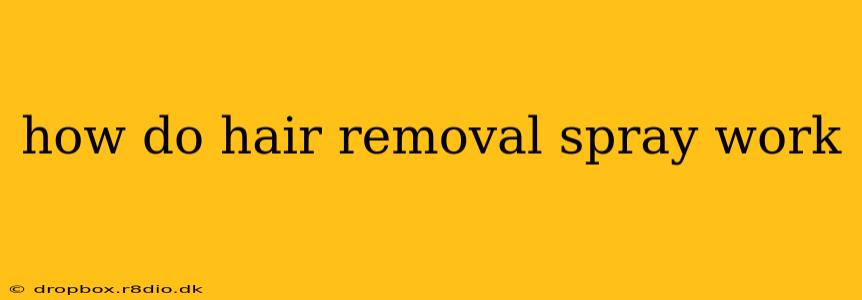Hair removal sprays offer a seemingly effortless solution to unwanted hair, promising a quick and convenient alternative to shaving, waxing, or epilating. But how exactly do these sprays work, and are they truly effective? Let's delve into the science behind these products and explore their efficacy, limitations, and safety considerations.
Understanding the Mechanism: Depilatory vs. Epilatory Sprays
It's crucial to differentiate between two types of hair removal sprays: depilatory and epilatory. Many marketed "hair removal sprays" are actually depilatory, meaning they dissolve the hair at the skin's surface. True epilatory sprays, which remove the hair from the root, are significantly rarer and often less effective.
Depilatory Hair Removal Sprays: Chemical Dissolution
Depilatory sprays typically contain chemical agents, most commonly thioglycolic acid or calcium thioglycolate. These chemicals break down the protein structure of the hair shaft, causing it to weaken and dissolve. The spray is applied to the skin, allowed to sit for a specified time (as indicated on the product instructions), and then wiped away, along with the dissolved hair.
How it works step-by-step:
- Application: The spray is applied evenly to the targeted area.
- Chemical Reaction: The active ingredients (thioglycolates) penetrate the hair shaft.
- Protein Breakdown: The chemicals break down the keratin protein bonds within the hair.
- Dissolution: The weakened hair dissolves, becoming soft and easily removed.
- Removal: The dissolved hair is wiped away with a cloth or rinsed off.
Are Epilatory Hair Removal Sprays a Reality?
While some products might claim to be "epilatory sprays," true root removal through spraying is challenging. The mechanism for epilating hair typically involves gripping and pulling the hair from the follicle, a process difficult to achieve with a spray. Products claiming epilation likely employ depilatory actions with additional ingredients that claim to slow down hair regrowth.
Effectiveness and Limitations
Depilatory sprays offer a relatively painless method of hair removal, but their effectiveness is limited.
Pros:
- Painless: Unlike waxing or epilating, there's minimal discomfort.
- Convenient: Quick and easy to apply, especially for smaller areas.
- No need for tools: Unlike shaving, no razors or other equipment are required.
Cons:
- Temporary results: Hair regrowth occurs within a few days, similar to shaving.
- Potential for irritation: The chemicals can cause skin irritation, redness, or allergic reactions in sensitive individuals.
- Unpleasant odor: Some sprays have a strong, unpleasant odor due to the chemical ingredients.
- Ineffective on coarse hair: These sprays are generally more effective on fine or light hair.
Safety Precautions and Considerations
Before using any hair removal spray:
- Perform a patch test: Apply a small amount to a discreet area of skin to check for allergic reactions.
- Follow instructions carefully: Adhere strictly to the application time and other instructions provided by the manufacturer.
- Avoid contact with eyes: If the spray gets in your eyes, rinse immediately with plenty of water.
- Don't use on irritated skin: Avoid using the spray on broken, sunburned, or otherwise irritated skin.
- Consult a dermatologist: If you experience significant irritation or allergic reactions, seek advice from a dermatologist.
Conclusion: A Convenient but Temporary Solution
Hair removal sprays offer a quick and relatively painless way to remove unwanted hair. However, their effectiveness is temporary, and potential side effects, such as skin irritation, need to be considered. While convenient for occasional use, those seeking long-term hair reduction should explore alternative methods like laser hair removal or electrolysis. Always carefully read and follow product instructions and prioritize skin safety.

